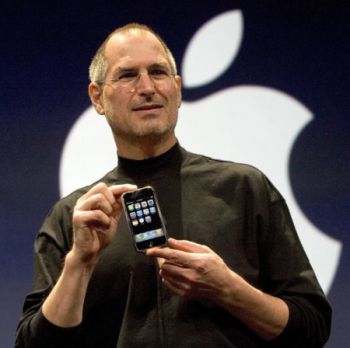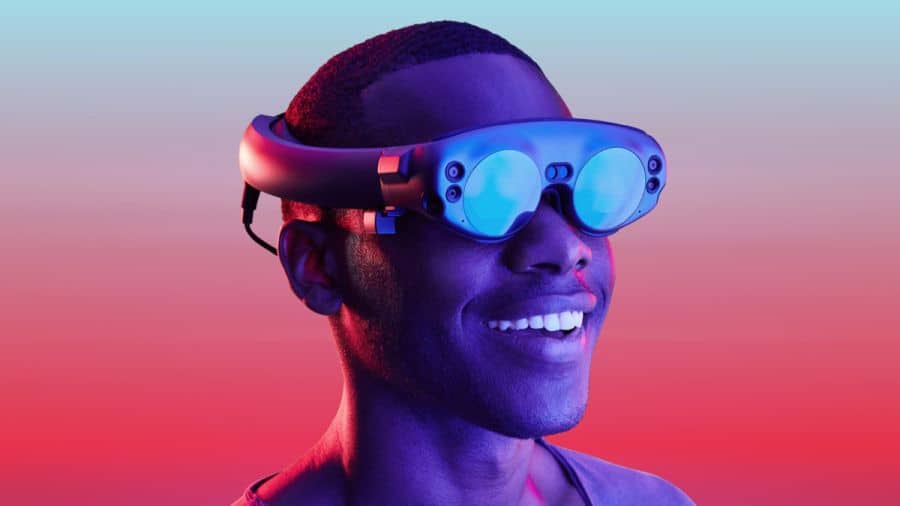It’s undeniable that in the last twenty years, significant strides have been made in the field of digital technology. As technology develops, so too do the day-to-day devices we use. Enterprises are constantly trying to improve a user’s experience in different fields of life, irrespective of how minor the change may be and how surprising the device might be.
One such novel technological device which has surprised the world since it hit the market is smart glasses. The concept of glasses which are computer-enhanced in order to allow the user to access information is something which some people still can’t wrap their head around. What’s more, some of the more recent models are even featuring most of the perks offered by smartphones, and the market for them is growing.

With a universal growing interest in these glasses, some people ask: what are the odds that smart glasses will eventually replace smartphones?
This scenario is actually quite likely to happen within the next 10-15 years. First, however, the tech needs do advance and become smaller in size, the price has to come down and several other obstacles need to be solved.Care to find out more? Keep reading!
A Look At Smart Glasses: A Broad Overview
Let’s start this off by saying that smart glasses are trendy technological devices which recently started gaining mainstream attention, and when I say recently, I mean within the last ten years. They form part of a trend known as wearable technology, which is basically technological devices that you can wear.
These devices grant you the ability to access the typical features offered by most computer-assisted programs, including independent processing and wireless connectivity. Now, while they might be placed in the same bracket as wearable technology, smart glasses deserve their own sub-category. Producers of smart glasses fuse traditional glasses with the concept of app-based computers. Therefore, they’re completely different from other types of wearable technology.
Actually, one can argue that the first time that this type of technology got serious attention was in 2013 when X Development LLC released the Google Glass.

When the glasses were announced, they were marketed as an optimal head mounted display (OHMD) which gave you the same features as a smartphone with the luxury of not actually having to hold the device. They work with a computer device which projects images unto the lens. However, the device also allows you to see through it.
Another interesting technological tool which smart glasses feature is something known as augmented reality This is a type of digital technology which provides you with a digitally-enhanced view of the world around you. What’s more, smart glasses these days tend to have the same features as most smartphones. These include:
- Calculator/Clock
- GPS Navigation
- Activity tracker
- Music
- Camera and video options
- Wireless Connectivity
Because of the similarities in features being offered by some of the leading smart glasses and smartphones, some have expressed concern that the former might very well replace the latter.
Actually, studies have come out making some bold predictions that by 2019, smart glasses will have seen a growth rate of about 200%. Still, some aren’t convinced. Care to know what folks are saying about these glasses overtaking smartphones in the future?
Why Smart Glasses Will Take Over
We’ll start off with those who believe that it’s only a matter of a few years until smart glasses completely replace smartphones as the leading smart device. Note well: I said “as the leading smart device.” In the near future, it is unlikely that smart glasses will completely erase smartphones from the market.

However, in order to understand why the most popular devices of the future might very well be smart glasses, we must first look at what’s going on with smartphones. I’d just like to say that in 2007, Steve Jobs indirectly prefaced the fall of the smartphone when he came out and boldly stated “You don’t need a smartphone.” Well, at the time, he could have never imagined the gravity that this comment would have had ten years later.
Now, we’re not saying that there aren’t multiple, almost never-ending benefits associated with owning a smartphone. But, over the years, some claim to have seen smartphones become less and less appealing both aesthetically and practically.
They’ve gotten bigger and far bulkier than most would like. Gone are the days where smartphones were sleek, thin devices. Now, manufacturers seem to be going for these chunkier models, and generally speaking, people aren’t too pleased. One would think that as technology advances, we would find a way to make our devices less of a burden by making them more compact. However, that doesn’t seem to be the case.
Consequently, the need for a more comfortable means of doing what a smartphone can already do has come about: in other words, a screen located close to the eye. This is where smart glasses come in: they fill the void that smartphones can’t. They eliminate the hassle of having to hold a device: you can wear them, going hands-free. Undoubtedly, it’s easy to see how this is a great marketing tool for smart glasses, right?
Now, granted, it’s only been a couple of years since serious smart glasses have been released, so there’s still a lot of room for growth. But it cannot be denied that the foundation has already been laid for what is to come. Right now, smart glasses are being made with both visual and audio-based augmented reality. Developers are creating products which offer diverse and unique user-based experiences. For some people, having the aid of a virtual assistant that you can talk to is more attractive than physically touching a screen (as you would have to do with a smartphone.)
What’s more, some feel that the advances in smartphone technology over the last dozen years hasn’t been remarkable. The improvements have been incremental: in other words, there haven’t been any ground-breaking, revolutionary upgrades in smartphones over the years.
However, smart glasses look like they have a lot of potential for improvement. What’s more, Apple is supposed to be in the lab producing their smart glasses which we can imagine will be huge. For all we know, in a few years, smart glasses will have advanced so much that they might overtake smartphones not only in terms of convenience but also just in terms of raw technological output.
Why They Won’t Take Over (At Least For Now)
Without denying that the future of smart glasses looks bright, there are quite a few who believe that it’s still too early to draw conclusions like smart glasses will replace smartphones as the leading smart devices. Smart glasses still have several kinks and problems which need to be solved before they can be considered the most significant smart device on the market.
For starters, there’s the problem with the equipment for augmented reality. It’s size (or sometimes lack thereof) is a telling factor which can pose some difficulty to the user. Basically, with smart glasses, the bulkier they are, the more advanced is their computational abilities. Obviously, bulkier smart glasses imply more weight, which can be uncomfortable depending on the user.
However, less bulky smart glasses aren’t as digitally powerful. For instance, the Google Glass is a relatively light pair of smart glasses. As a result, it doesn’t have the most powerful computer-assisted technology, meaning that your experience will be limited with these glasses. For now, it seems like either way you go, you’re getting the short end of the stick.
Then, the field of view (FOV) is another area which needs to be worked on in the coming years to really improve expected consumer production. Based on a statement issued by Taylor Freeman, the co-founded and CEO of Upload.io, the glasses’ FOV would have to be at least 200 degrees in order to guarantee the user a stellar experience. At present, this seems to be a far-away improvement for augmented reality smart glasses. Because of their hardware, developing a pair of high-quality smart glasses with great FOV has been a challenge. For example, top-end products on the market like the ODG R9 or the Magic Leap One only feature 50-degree FOVs. Because of the view quality, virtual objects appear far to you, making the viewing experience restrictive.

Yet another area which will prove quite challenging for smart glasses in establishing itself as a highly sought-after product is, of course, it’s price. Right now, smartphones are by far the more affordable devices between the two. Right now, if you’re looking at getting a top-of-the-line pair of smart glasses, you can spend as much as $3000, and that’s for the Microsoft HoloLens. Or, if you’re on a budget, you can consider buying the ODG R9, but that you can pay anywhere from $1800-$2000.
Compare those prices to that of the iPhone XS. This smartphone retails at about $1000, which is still much cheaper than the leading smart glasses. Is the ordinary consumer really going to pay double or even triple the price of the most expensive smartphones to own a pair of smart glasses? The chances are, no. At present, there’s hardly any plausible reason, neither based on software, nor the overall user experience to motivate someone to spend that kind of money on smart glasses. If, in the future, prices drop a little and developers manage to seriously beef up on the experience offered, smart glasses might give smartphones a run for their money. But for now, it doesn’t seem very likely.
Focals By North – Attempt at Consumer-Oriented Smart Glasses
Speaking about pricing, this wouldn’t be a fair piece if I didn’t mention that there has, in fact, been an attempt by a company to produce affordable smart glasses. I’m talking about none other than Focals, a pair of relatively affordable smart glasses produced by North Smart Glasses.
Initially, these glasses cost $1000, but the company decided to drop the price to $599. Now, when you compare the price of these glasses to your typical high-end smart phone price range (between $600 and $1000,) they look like an attractive option. More importantly, if you’ve read reviews about the glasses, they tend to be generally positive. Surely they’re a sign that smart glasses can compete with smartphones on a commercial level, right?
Well, no, you would be wrong. You see, these glasses might be reasonably priced, but it’s not as if you’re getting the same high-quality technology as you would with a smartphone of the same price. Granted, the glasses work pretty well. With them, you can call an Uber, connect them with your phone via Bluetooth, and also use Alexa.
They’re also pretty normal-looking: the chances of people noticing you’re wearing something other than regular glasses is one-in-a-million. Therefore, if you’re someone who doesn’t want other people knowing that you’re using smart glasses, they’re a pretty good pair, especially considering the price. But that’s about it. As one critic put it, there are a lot of issues with these glasses which make them mediocre.
For starters, the app support on these glasses isn’t anything spectacular. As a result, texting is a huge pain in the balls, especially if you use IPhones. These devices aren’t compatible with IMessage. This is a real annoyance as every time you try to message someone via the company’s server, it initiates a new thread, which can be confusing to the recipient.
Then, the mapping feature is another major issue. These glasses’ map features are powered by Mapbox. However, they fail to impress. It’s extremely basic, only providing walking directions, and some have complained that it’s not very accurate.
I say all of this to show that the glasses aren’t bad. You get pretty good value for your money. But to say that they are comparable with a smartphone is ludicrous and downright blasphemy. These glasses can act as a support device for a smartphone, but can’t replace it. As I mentioned before, if smart glasses are going to overtake smartphones in the future, they need to offer the same or better features than smartphones at an affordable price. The sad reality is that no such pair exists at the moment.
Verdict
All in all, making predictions with regard to the future of smart glasses and the chances that they will ever replace smartphones is a tough call. Honestly, as discussed previously, I got to admit that smart glasses have a lot of potential. What’s more, at the rapid rate at which technology is advancing, smart glasses might soon be fully equipped with the absolute best of the best.
That said, based on the way the products have developed thus far, it does seem like a long way to go. What’s more, there are other factors which need to be taken into account before you can say that technological consumers will gravitate more towards smart glasses than smartphones (mainly the price)
Whatever the case may be, smart glasses are clearly not a trend which will last a couple of months only to be never heard of again. These babies are the future of smart technology: all that’s left to see is how big of an impact they will have on the market.

